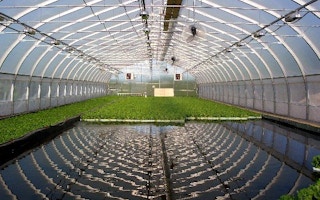A specialist science communicator today will call for a national strategy to develop aquacultural production of food and fuel to build a new industry worth an estimated $30 billion a year by the second half of this century.
In a key address to the Australasian Aquaculture Conference in Melbourne, Canberra author Julian Cribb will spell out what he sees as the greatest challenge in human history: how to feed 10 billion people for more than half a century.
Mr Cribb will outline the ”wicked problem” of not having enough of everything we need to produce good food - from water, land, nutrients to wild fish and finance - and will say the challenge is very great, but the opportunities which flow from it are greater still.
”Among the greatest of these opportunities is the culture of aquatic plants and animals,” Mr Cribb says.
”There is no doubt in my mind that, in decades to come, aquafarmers will supply most of the world’s liquid fuels and plastics as well as around a quarter of its food.”
Mr Cribb’s latest book, The Coming Famine, paints a vivid picture of an impending planetary crisis - a global food shortage that threatens to hit by mid-century which would dwarf any in our previous experience.
He believes governments have lost focus on land degradation.
”Also the world appears to have passed peak farm land: the area of land under cultivation or grazing has been shrinking steadily since the start of this century. By 2050 many cities will have 20, 30 and even 40 million inhabitants and together they will occupy an area the size of China.”
Solving the challenge of feeding a world of 10 billion people would need the creation of cities which recycled their water, nutrients and energy back into food production.
Mr Cribb’s address coincides with a huge waste company near Canberra embarking on the second stage of a trial aquaculture project at the Woodlawn bioreactor near Tarago.
Methane gas rising from rotting rubbish fuels electricity generators, and heat off those generators warms deep ponds where silver perch are thriving.
Larger fish have been relocated into dams, while another 1000 fingerlings have arrived for tests on growth cycles to establish a business case.
Aquaculture is not the Veolia bioreactor’s core business, but it has invested more than $500,000 on fish and horticulture facilities and is looking for markets.
Mr Cribb believes by the second half of this century aquaculture will grow steadily to become the biggest food producing industry in the world.
”In a world where farmland is running out, where fresh water for irrigation is increasingly scarce … and where the cost of feeding livestock will be astronomical, the farming of fish has a huge advantage,” Mr Cribb said.

















